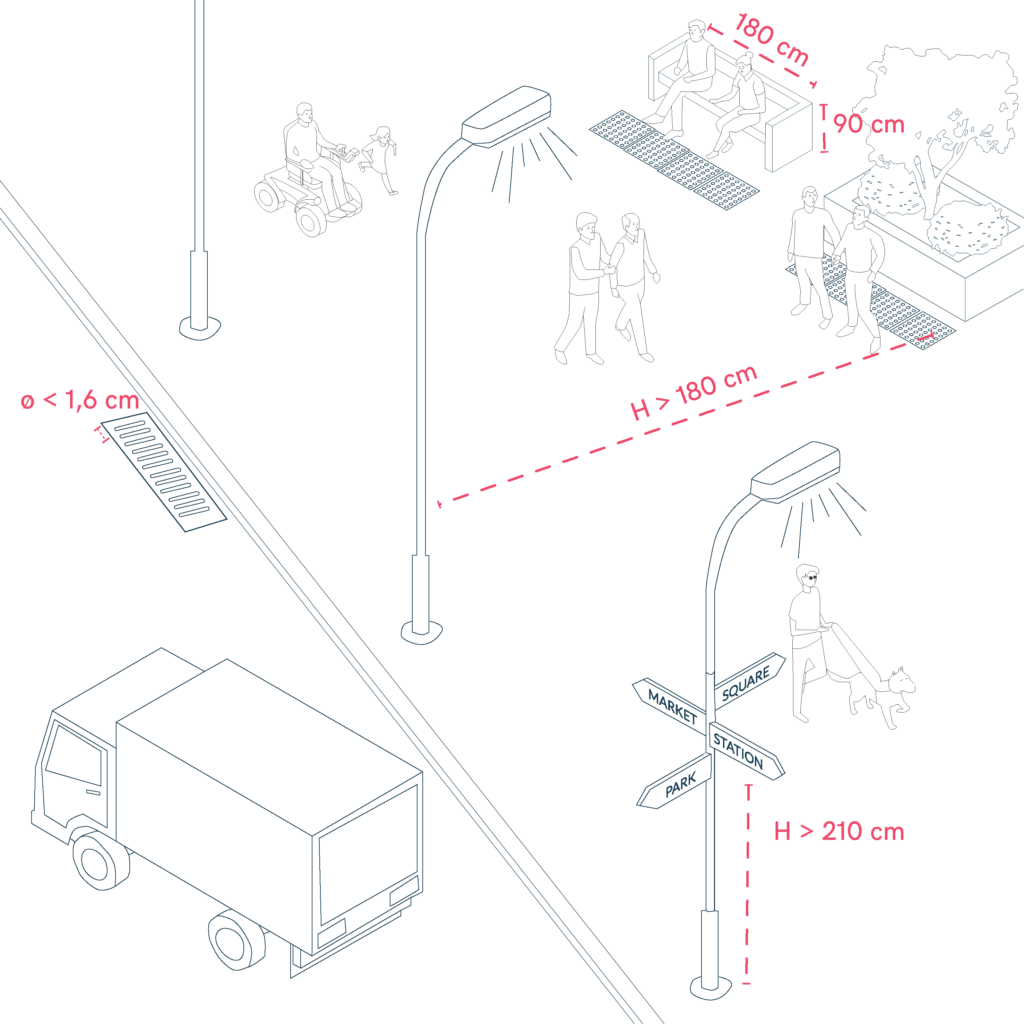Pedestrian Routes
Pedestrian pathways should cater to a wide variety of users, ensuring accessibility, safety, and comfort for all individuals, including those with disabilities, seniors, and families. Well-designed pedestrian routes are crucial for allowing individuals to navigate urban spaces independently and safely.

- Minimum pathway width: 1.80 meters, accommodating all users, including those with mobility aids or strollers.
- Ensure vertical clearance of at least 2.20 meters to prevent obstruction for taller users.
- Provide smooth, non-slip surfaces for safe and comfortable navigation.
- Include proper lighting along the entire pathway for visibility and safety.
- Provide clear signage to indicate directions and warn of potential hazards.
- Use ramps or level surfaces to eliminate steps or barriers and include tactile guide strips for visually impaired individuals.
- Design with rest areas along longer routes to accommodate breaks.
- Carers
- Children
- Cognitive
- Cognitive abilities
- Decolonial perspective
- Digital
- Digital barrier
- Enviroment
- Environmental
- Gender and generations
- Gender perspective
- Hearing impairment
- Low-education
- Low-income
- Older people
- Other
- Physical abilities and features
- Sensory and Physical
- Socioeconomic
- Visual impairment